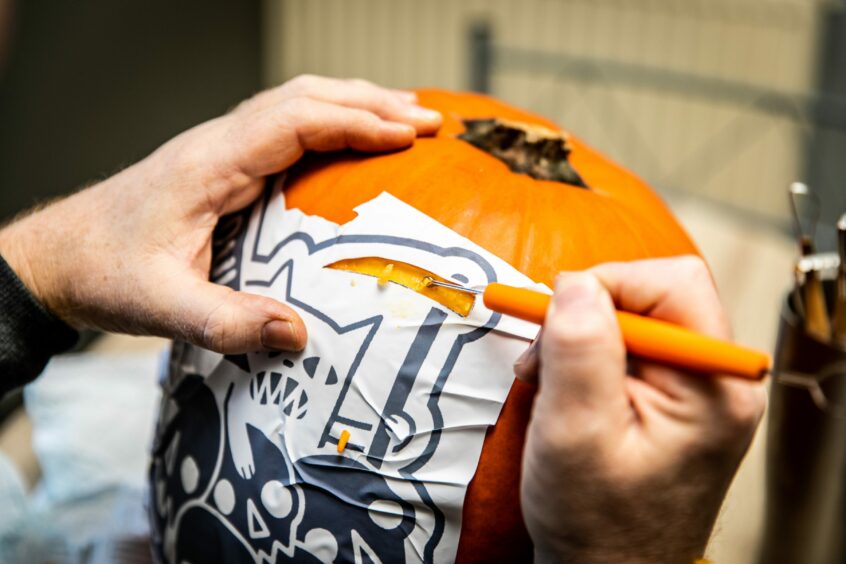Pumpkin carving – it isn’t the easiest of tasks, no matter your age.
And so to help ease the pressure this Halloween, we bring you five top tips to achieve a professional finish from expert carver, Pumpkin McFife.
The Kirckaldy crafter – real name James Phimister – has been at the game for ten years and is making his mark amongst the best in America.
Here he shares some of his top pumpkin carving tips to help you achieve a show-stopping display.
1. Bottoms up!
The first of Pumpkin McFife‘s carving tips is to cut from the bottom up.
Remove a circle shape from the base just big enough to get your hand inside – no cutting a lid from the top, it will only fall inside as the fruit decays.
Clean up the removed section. This will be the stand for your light, place the pumpkin back on top of it after it is carved.
Then take out all the guts and seeds from the inside using a clay scoop, or metal spoon.
Don’t throw away the insides, he says, as the flesh is great for pumpkin pie and the seeds can be kept and planted outside next year.
2. Keep it thin
Trim off the carving wall from the inside so that there is less to cut or saw through. If the wall is too thick a carving saw will not get through it, says James.
3. Pre-plan your design
Use a stencil if possible, James suggests. These are available for cheap at a wide range of shops during this time of year, including supermarkets.
Or draw your own design straight onto the pumpkin using a permanent marker or felt tip pen, then cut around the outline.
4. Think about shading
When carving your design, remember to think about shading, James says. Shallow cuts just below the skin will create dark areas and deeper cuts into the flesh will create lighter areas.
5. Wash it out
After carving your pumpkin, you can wash the inside with bleach to delay the decaying process, says James.
Keep children away from the bleach and use a battery-operated LED light rather than a naked candle due to fire risk.
“Washing the pumpkin out with bleach is supposed to stop disease and rot and make it last longer,” he said.
“I’ve tried with bleach and without but I’ve never really worked out if it does actually make it last longer but there’s nothing worse than spending 18 hours on a design then watching it rot.”
Anyone tempted to try this is advised to follow usual safety precautions associated with bleach, such as wearing gloves and using in a well ventilated area.













Conversation